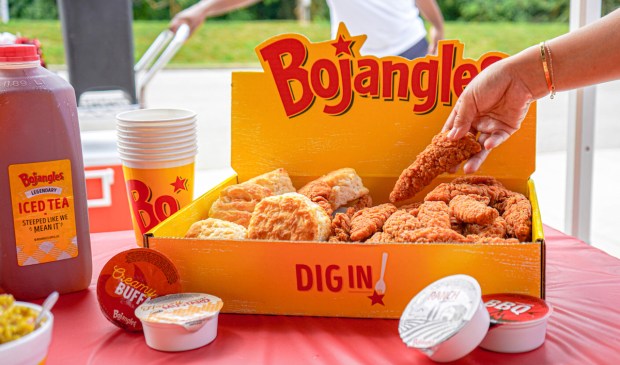Restaurants Target Consumers’ Game Day Spend to Drive off-Premise Sales

This week in restaurants, Bojangles and Jersey Mike’s both leverage football season to boost off-premise sales, Walmart expands its in-supermarket restaurant selection, and fast-casual goes fancy.
With the return of college football season, restaurant brands are seizing on the opportunity to create a new ordering occasion, feeding tailgaters with targeted off-premise options.
Charlotte, North Carolina-based quick-service restaurant (QSR) chain Bojangles, which has approximately 800 locations, announced Thursday (Aug. 24) the launch of meal boxes specifically created for these tailgaters, partnering with 10 universities and one NFL team on themed boxes. The brand is hoping to drive digital ordering through its recently revamped mobile app.
Bojangles is not the only restaurant chain leveraging the season to reach new audiences and drive off-premise sales. Fast-casual sandwich chain Jersey Mike’s, which has thousands of locations across the United States, is bringing tailgate trailers to 29 games across the country, according to QSR, in an effort to boost brand affinity with this enthusiastic demographic and to link the brand’s sub sandwiches to the tailgating occasion.
Overall, off-premise channels are key for restaurants’ success today, with half of all sales occurring via these channels, per research from PYMNTS’ study “Connected Dining: Rising Costs Push Consumers Toward Pickup.” The report, which drew from a survey of more than 2,100 U.S. consumers earlier this year, found that 10% of restaurant customers said they had placed their last order for delivery, while 39% had done so for pickup.
Walmart Expands in-Store Restaurant Efforts With Poke Partnership
Poke chain Uncle Sharkii, which has about a dozen stores at malls and other nontraditional locations across the Western United States and Texas, announced Monday (Aug. 21) that it is partnering with Walmart to bring its food to the retailer’s stores.
The move offers the poke brand the benefit of Walmart’s vast audience — the chain is the largest grocer in the U.S. — and helps Walmart step up its efforts to meet more of consumers’ nongrocery food needs.
“At Walmart, we are committed to providing our customers with a wide variety of products and services that they want and making those things available to them at affordable prices,” Angelica Teague, senior manager of retail services at Walmart, said in a statement. “We love partnering with local businesses across the country to offer our customers new and healthy dining options…”
Grocers are increasingly looking to meet all of consumers’ day-to-day food needs, offering not just raw groceries but also prepared meals and on-site restaurants. For instance, Walmart’s competitor Kroger, the nation’s top pure-play grocer, has reportedly become the No. 1 sushi seller in the U.S.
Research from PYMNTS’ study “Connected Dining: Ready-to-Eat Meals Are Eating Restaurants’ Lunch,” which drew from an April survey of more than 2,300 U.S. adults, revealed that 57% of consumers (roughly 96 million people) had bought ready-to-eat meals in the previous month, and 65% purchased their most recent one from a grocery store.
Fast-Casual Gets a Fine Dining Update With Michelin-Starred Chef’s New Concept
In Montclair, New Jersey, Michelin-starred chef Joseph Sergentakis is opening a high-end fast-casual eatery, Boschetto, in partnership with restaurateur Robert Spina and with Ryan Held, according to Northern New Jersey news outlet The Bergen Record (via Yahoo).
“I don’t know anyone else doing this,” Sergentakis told the outlet. “There are no tablecloths, no table service, but we are a fine-dine restaurant in a fast-casual environment. It’s very casual yet the food is incredible.”
The news is significant given fast-casual’s rapid rise in the recent past, but until this point, fast-casual has typically been seen as a middle ground between QSRs and casual dining — higher-quality food than the former, but more convenient and often more budget-friendly than the latter (or at least similarly affordable).
Often, fine dining is seen as being as much about the hospitality as the food. The success of this restaurant will give a sense as to whether consumers are interested in springing for fine dining without the full-service experience.

